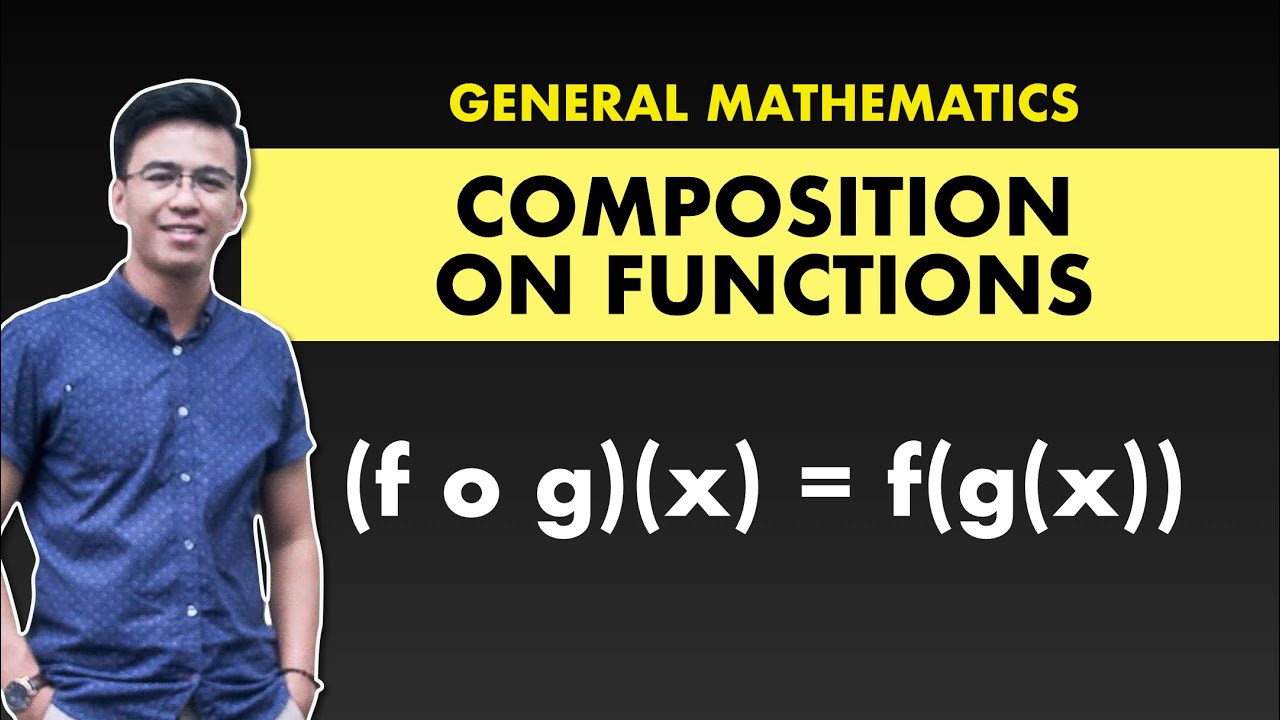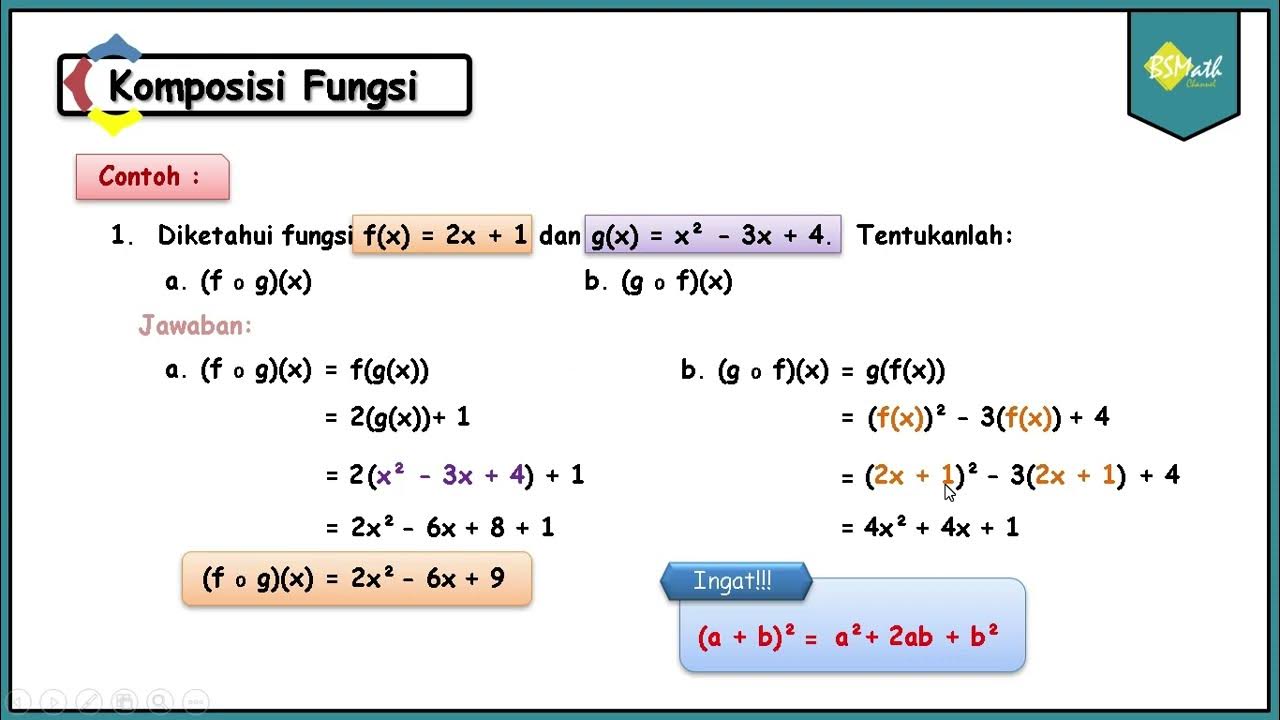Verifying inverse functions by composition | Mathematics III | High School Math | Khan Academy
Summary
TLDRThe video explores the concept of function composition, focusing on two functions, f(x) and g(x). The speaker walks through the process of evaluating f(g(x)) and g(f(x)), demonstrating how both simplify to x. This leads to the conclusion that f and g are inverse functions of each other, meaning that applying one after the other returns the original input. The video provides a clear explanation of inverse functions and how function composition works, using step-by-step algebraic manipulations to illustrate the concept.
Takeaways
- 🔄 f(g(x)) means substituting g(x) into the function f(x).
- 🧮 g(x) is given as the cube root of (x + 1) minus 7.
- 📊 f(g(x)) simplifies by substituting g(x) into f(x), resulting in x.
- ➖ In f(g(x)), adding and subtracting 7 simplifies the expression.
- ✂️ After simplification, f(g(x)) = x.
- 🔢 g(f(x)) involves substituting f(x) into g(x).
- 🔁 g(f(x)) simplifies to x, using similar logic as for f(g(x)).
- 🔍 Both f(g(x)) and g(f(x)) return x, showing a 'round-trip' function.
- 🧩 This means that f and g are inverse functions of each other.
- 🔄 Inverse relationships imply f(x) is the inverse of g(x), and vice versa.
Q & A
What is the expression for f(x) in the transcript?
-The expression for f(x) is (x + 7)^3 - 1.
What is the expression for g(x) in the transcript?
-The expression for g(x) is √[3]{x + 1} - 7.
How do you evaluate f(g(x))?
-To evaluate f(g(x)), substitute g(x) into f(x), replacing every x in f(x) with g(x). This gives (√[3]{x + 1} - 7 + 7)^3 - 1, which simplifies to x.
How do you simplify the expression for f(g(x))?
-First, the terms -7 and +7 cancel out, reducing the expression to (√[3]{x + 1})^3 - 1. Then, the cube root and cube cancel, leaving x + 1 - 1, which simplifies to x.
What is the result of f(g(x))?
-The result of f(g(x)) is x.
How do you evaluate g(f(x))?
-To evaluate g(f(x)), substitute f(x) into g(x), replacing every x in g(x) with f(x). This gives √[3]{(x + 7)^3 - 1 + 1} - 7, which simplifies to x.
How do you simplify the expression for g(f(x))?
-First, the terms -1 and +1 cancel out, reducing the expression to √[3]{(x + 7)^3} - 7. Then, the cube root and cube cancel, leaving x + 7 - 7, which simplifies to x.
What is the result of g(f(x))?
-The result of g(f(x)) is x.
What conclusion can be drawn about the relationship between f(x) and g(x)?
-Since both f(g(x)) = x and g(f(x)) = x, the functions f(x) and g(x) are inverses of each other.
How can you describe the round-trip behavior of these composite functions?
-If you input x into g(x), then input the result into f(x), you get back x. Similarly, if you input x into f(x) and then into g(x), you also get back x. This 'round-trip' behavior confirms that f and g are inverses.
Outlines

此内容仅限付费用户访问。 请升级后访问。
立即升级Mindmap

此内容仅限付费用户访问。 请升级后访问。
立即升级Keywords

此内容仅限付费用户访问。 请升级后访问。
立即升级Highlights

此内容仅限付费用户访问。 请升级后访问。
立即升级Transcripts

此内容仅限付费用户访问。 请升级后访问。
立即升级5.0 / 5 (0 votes)






